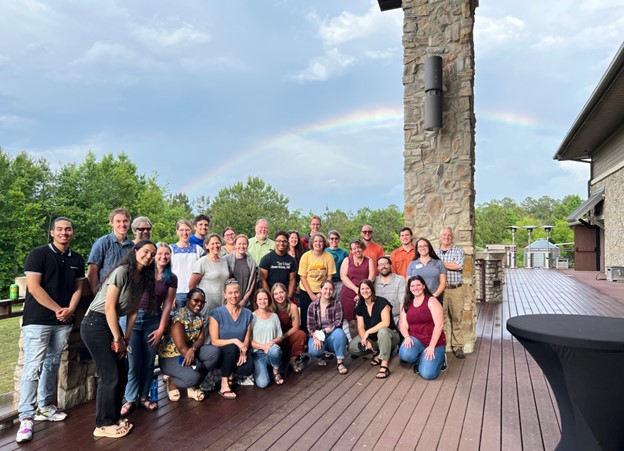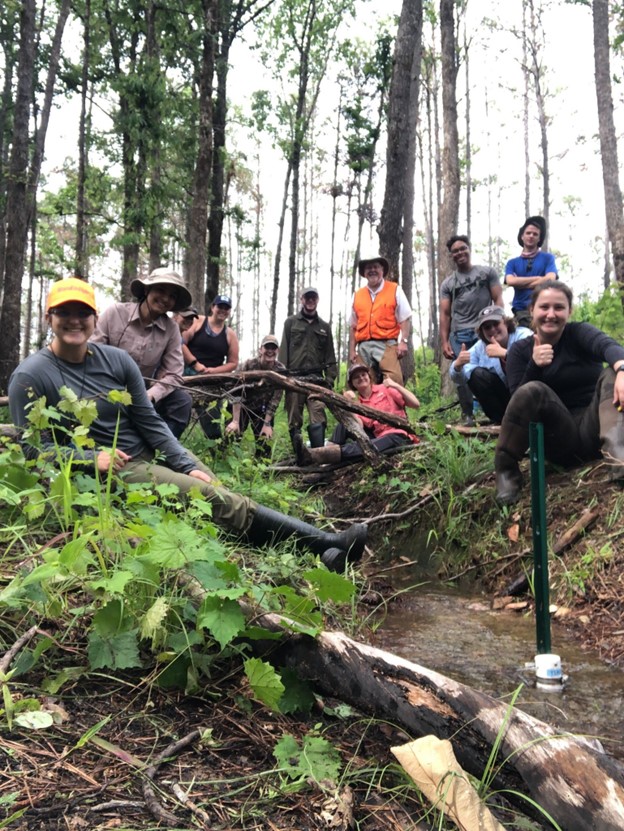Drs. Atkinson, Benstead, Jones, and Shogren have been awarded a research grant from the National Science Foundation EPSCoR program to study how stream drying impacts downstream water quality. Part of the larger Aquatic Intermittency effects on Microbiomes in Streams (AIMS), this $6.6 million award is a large collaboration between UA, University of Kansas University of Mississippi, University of Southern Mississippi, University of Oklahoma, Kansas State University, and Idaho State University. Here at UA, AIMS currently supports one postdoctoral researcher, two PhD students, two masters students, and three undergraduate summer interns.
Globally, over 60% of streams and rivers go dry on an annual basis. Even here in Alabama where we get over 53 inches of rain annually, over 40% of our mapped stream miles go dry regularly. However, we know very little about what drives this stream drying, and importantly, how it impacts downstream water quality. In part, this gap in knowledge is due to the lack of 1) physical infrastructure designed to measure stream drying, and 2) scientific training that straddles aquatic and terrestrial systems. The AIMS project will address the first obstacle by creating a network of instrumented sites designed to generate “Big Data” to quantify stream drying, stream microbiomes, and water quality. AIMS will confront the second obstacle by using its network to provide training in collaborative science and interdisciplinary methods to study intermittent streams, and by providing workforce training in environmental “Big Data” tools through a new ‘On Ramps to Data Science’ program, which will focus on data generated by microbiome sequencing, environmental sensors, and geographic information systems (GIS). The overarching objective is to create research infrastructure and training capable of integrating big data sources needed to address water quality at the critical nexus between intermittent and perennial streams.
In the southeast region, the AIMS team has established three experimental watersheds spanning the diverse physiographic regions of Alabama, including locations in Greene County on Weyerhaeuser property (Coastal Plain), in Talladega National Forest (Piedmont), and in the Paint Rock Valley in Northern Jackson County (Appalachia). At each watershed, the AIMS team is using state-of-the-art sensor networks and seasonal sampling campaigns to measure changes in stream drying, stream microbial communities, and resulting impact on downstream water quality over space and time.
The AIMS team is also experimentally drying a stream to examine how microbial and macroinvertebrate communities respond to a stream going dry, and importantly, what happens to those communities when the stream re-wets. To do this, the team constructed a low-head dam and is diverting water around 100 yards of stream for four weeks. This whole-ecosystem experiment is one of the first of its kind, and along with the other data being collected, will help scientists inform future natural resource management and policy making.


